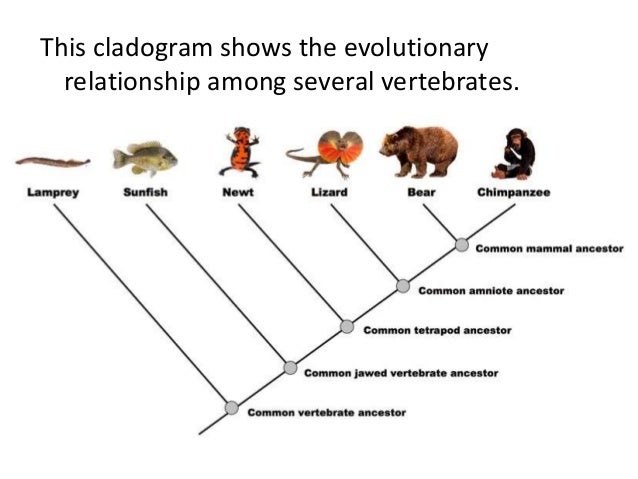Cladograms - Evolution IV - 10/22/17
Weekly Blog : Victor N. 8B
 |
| Image Link |
Summary:
You need a diagram to see how things are related to each other, right? Cladograms help us identify relationships between organisms. They show common traits and characteristics, and common ancestors of different species and organisms to see how they are closely related. In a cladogram (picture above), you can see there are 2 parts, the name of the organism and the name of the trait/ancestor. The more characteristics the organisms share, the "down the telescope" it is. In the cladogram above, you can see that the chimpanzee has all the trait below it, from common mammal ancestor to common vertebrate ancestor. The chimpanzee is closely related to the bear because it shares more common traits. The word species in Latin means kind. Species are groups of interbreeding organisms that do not ordinarily breed with members of other groups. You can classify life different ways, but to see the relations between different organisms and to see how closely related they are, you can use a cladogram.SP2 - Using models
To understand more about classifying life, my table group and I have been working on many activities that shows and teaches us how to make a cladogram. After making and a cladogram, we identified the different organisms. After looking at the cladograms, we saw which organisms are closely related by looking at the common characteristics. As you can see, my table group and I worked on worksheets and activities involving cladogram to practice classifying life.
XCC - Patterns
Through the 4 weeks of learning about evolution, I learned and have noticed more patterns in evolution. Like I said earlier, the more characteristics organisms share, the higher place up the organisms will be. This also means the more characteristics you share with another organism, the more closely related you are to that organism. In the cladogram above, you see the organisms: lamprey, sunfish, newt, lizard, bear, and chimpanzee, and you have the traits: common vertebrate ancestor, jawed vertebrate ancestor, tetrapod ancestor, amniote ancestor, and common mammal ancestor. The cladogram starts with the lamprey having a common vertebrate ancestor. Next, you have sunfish which has all the common traits below that, the common jawed vertebrate and common vertebrate ancestor. This goes for every organism to the last. In this case, the last organism is the chimpanzee which has common vertebrate ancestor to common mammal ancestor.
Multiplier
This week I was a wanderer because I have noticed many things, such as more patterns in evolution.
